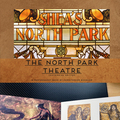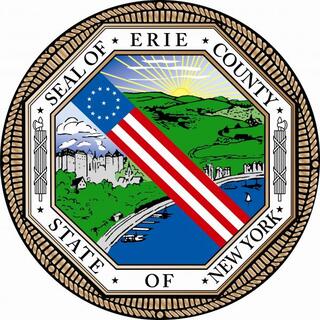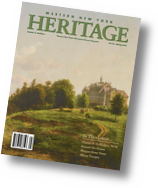The New York Central Terminal in Buffalo, located on what is now known as Memorial Drive, opened in 1929. The terminal had no plans to include a representative buffalo, but sometime during the late 1930s or early 1940s, the Buffalo Museum of Science loaned one of its 'stuffed' buffaloes to the New York Central for display in the terminal. It proved too popular with servicemen who rubbed its nose for good luck as they departed for war and, in 1945, the Museum reclaimed its exhibit.
Sometime after 1945 the New York Central, which had contracted with the display firm of Messmore & Damon* for an animated model of Niagara Falls, also hired them to create a buffalo for the Buffalo Central Terminal to replace 'Stuffy.' Colonel Francis B. Messmore, son of the company founder, said that his father sculpted the buffalo, which was a composite of clay and papier mache, painted to look like bronze. The new buffalo enabled people to continue to use it as a meeting spot in the huge terminal: "Meet me at the buffalo."
Passenger trains ceased using the Buffalo Central Terminal in 1979 and the station remained largely intact until the late 1980s when fixtures were sold; it was during this period that the buffalo was accidentally smashed. When Colonel Francis B. Messmore learned of the attempts to restore the terminal in 1992, he contacted a Buffalo city council member to say that he had fiberglass pieces made from the original mold of the buffalo if anyone wanted to reproduce it.
The University at Buffalo was looking to establish the buffalo as its campus icon and offiicals learned of the existence of the fiberglass parts. Fundraising for the casting of the buffalo in bronze was completed and, in August, 1997, the reproduction of the Central Terminal buffalo was officially dedicated on its own raised plaza at Coventry Circle (UB North Campus). It is 8 feet long, 65" high, 33" wide at its widest, and weighs 1,000 pounds.
Attending the dedication was Colonel Francis B. Messmore. He died in November of that year.
*Messmore & Damon was a firm starting in the 1920's which manufactured displays, theater props, exhibits for both commercial (fairs/expositions) and industrials clients (Standard Oil, Baltimore & Ohio, New York Central). The company was pioneering in the animatronics field, creating animals and human models with lifelike movements, including huge dinosaurs for the 1927 Chicago World's Fair. They also worked in films in Hollywood, creating the model city for the movie, Shangri-La.Colonel Francis B. Messmore put the company's talents to further use by developing a patient simulator, patented in 1972, which allowed students in the medical field to learn how to develop cardiac assessment skills.













